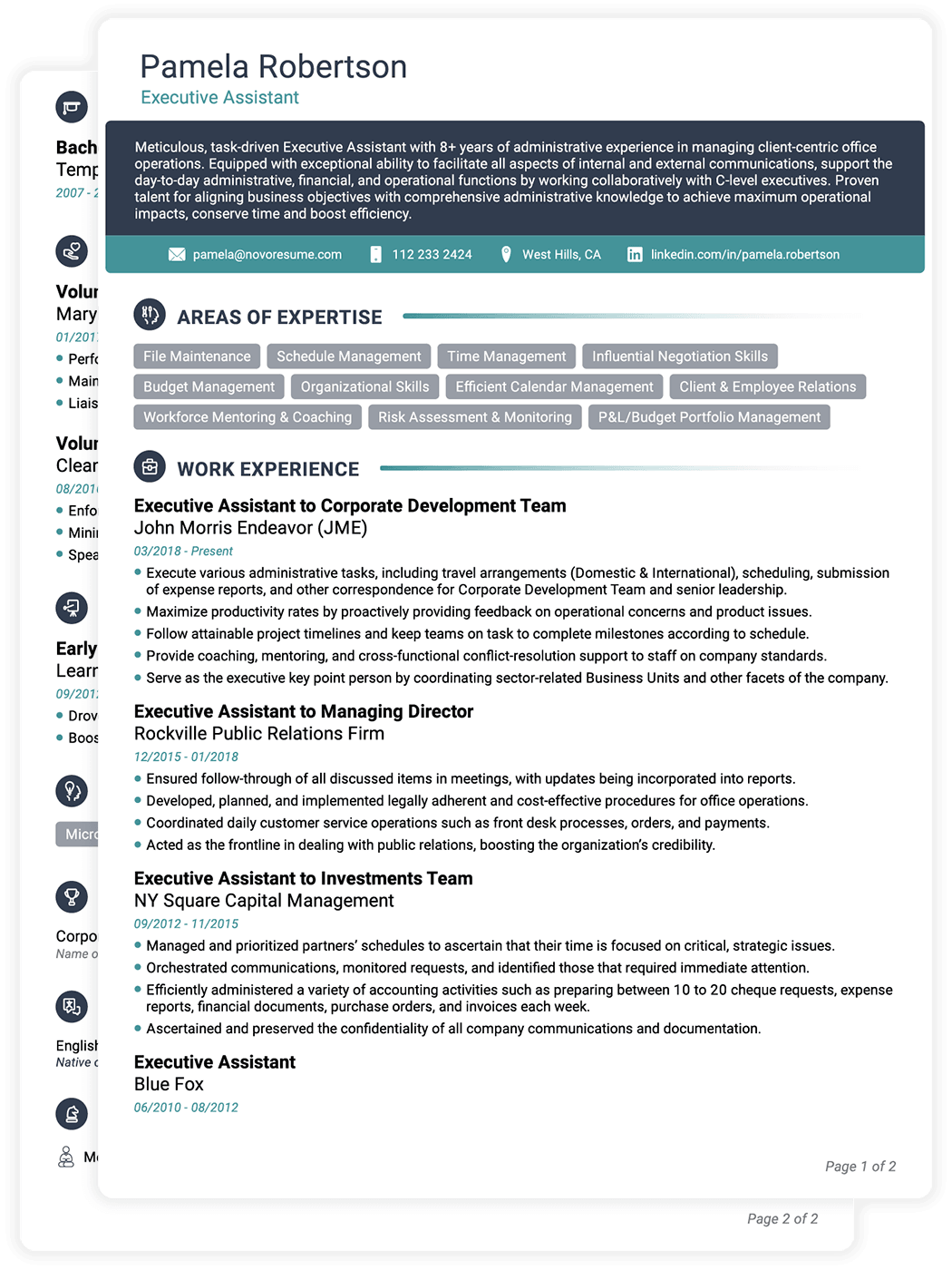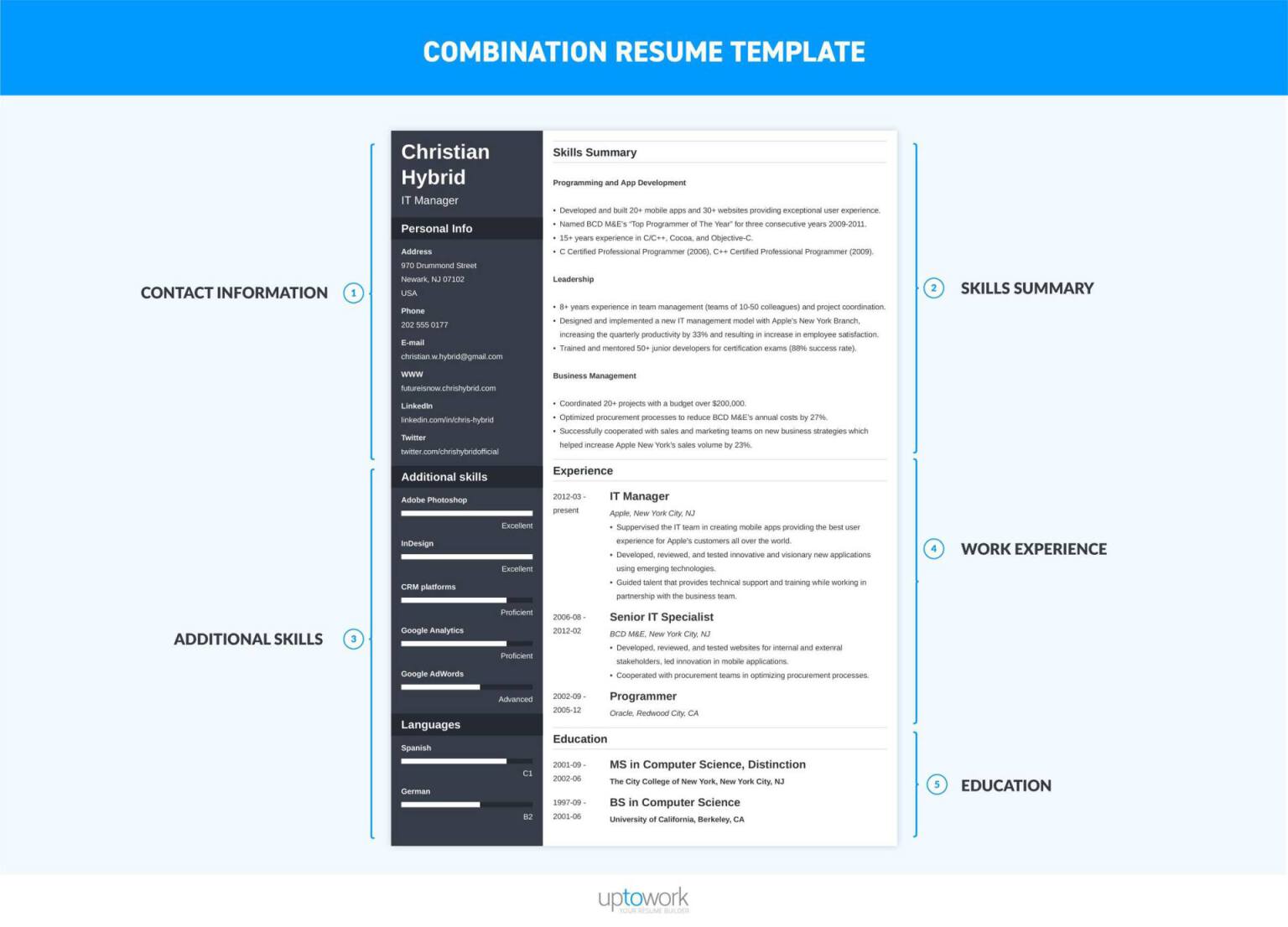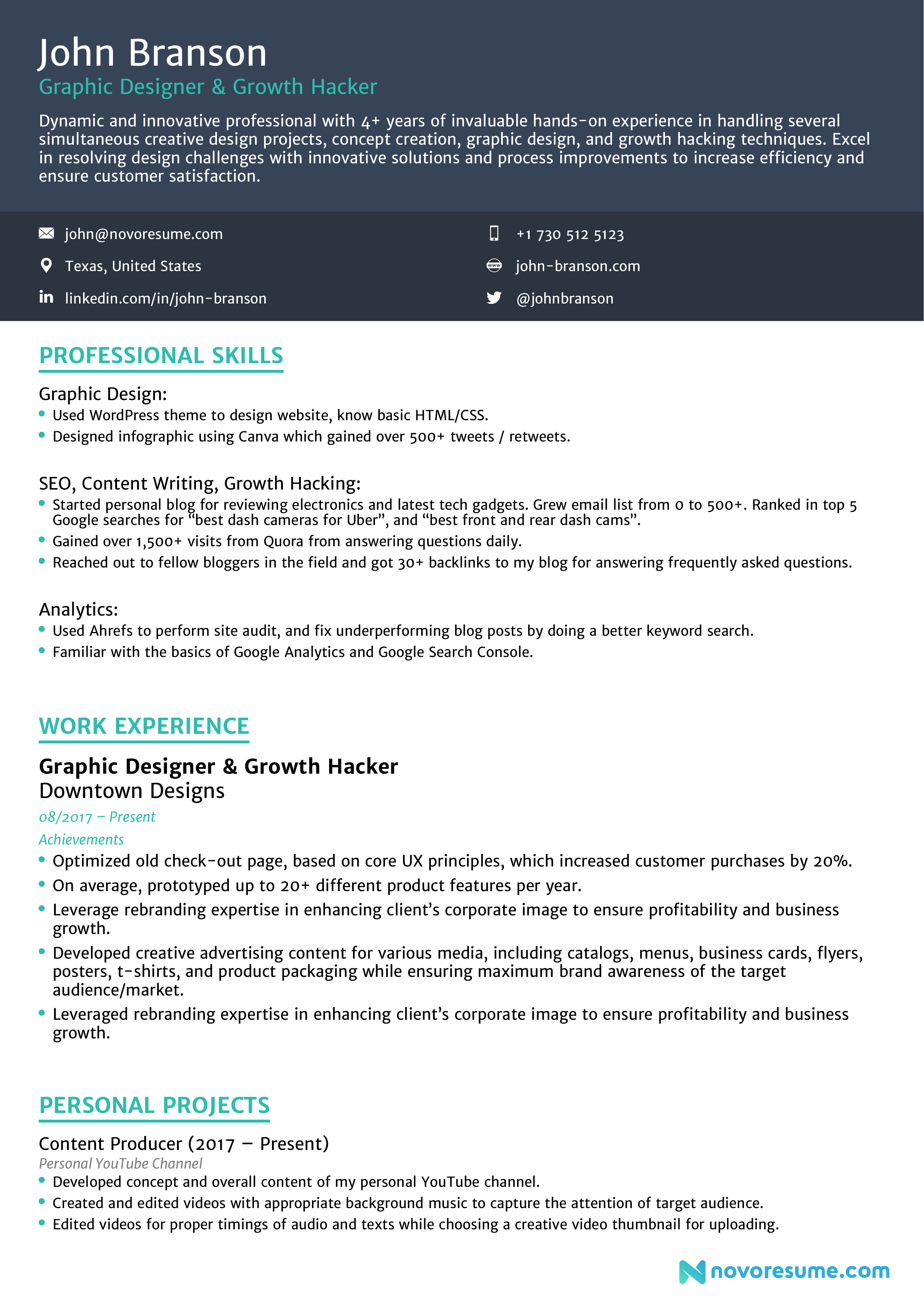It is apparent to all those jobs employers what a CV is, but the common stereotype is that only those who are graduates are eligible to have one or are supposed to possess it. Still, the degree holder can have a CV; students too can have a CV, Though the individual must have transferable skills listed on the CV.
Do you want to build a professional CV? But you are thinking, “all I need to put in my CV is the degree.” The first thing to do is to do some research, by doing this will help realize that a CV is much more than just a degree and skills.
Continue reading this post to find out what you need to make a professional CV. So, if you find it hard or are not educated on making a professional CV and want to build one, you are on the right track.
This post will help educate you on the concept of a CV by detailing its importance and how to create your CV easily; I will also provide you with some templates and videos on how to make a resume.
Table of Contents
What Is A Curriculum Vitae
A CV, which stands for curriculum vitae, is a document used when applying for a job(s). Its function allows you to summarise your education, skills, and experiences, enabling you to sell your abilities to potential employers successfully
Difference Between A Curriculum Vitae (CV) And A Resume
A resume is used for job search, while a CV is used for academic purposes. A resume is used for job search, while a CV is used for academic purposes. A CV is said to be the same as a Resume, though there is a slight difference: a CV is more content than a Curriculum: assume it is a one to two-page document presenting key facts about your professional educational experience, critical ground, and skills. But a CV(Curriculum Vitae) is a longer document that details the whole course of your career.
Why Is A Curriculum Vitae (CV) Important?
A CV is essential because it gives an applicant a chance to show a prospective employer the best of what the applicant has. It sells the skills and experience of the applicant, indicating to the employer that you are the right person for the job. Making a good impression is very important in today’s competitive job market. So, your CV will be the contact with employers, so it is essential to get it right.
Types Of Curriculum Vitae (CV)
Various CV types showcase work experience, industry knowledge, and skill sets in alternative ways, ranging from Chronological CVs, which highlight experience in reverse chronological order to Functional CVs, focussing on transferable skills.
Here is an overview of some of the different types of CV, and don’t forget: needs and desires can change; make sure before you step out looking for a new match; Assess what you want and are going after the right type for you! The following are the best types of CV Format.
- Reverse Chronological CV Format
- Functional CV Format
- Combination CV Format
Reverse Chronological CV Format: The reverse Chronological CV Format is a type of CB format in which you list your relevant work experience in Chronological reverse order, beginning with your most recent position chronologically backward. For each job, most, provide the dates, location nas, the name of the employer, and briefly outline, yes, key responsibility, and achieve briefly.
Chronological CV Format Template
A reverse-chronological CV typically includes the following sections, though they may add additional units to provide more insights into their relevant additional units per experience:
- Header with contact information
- Create a CV profile (also called a professional summary or objective)
- Describe your Work experience
- Detail your Education background
- Present Relevant Skills
- Add extra sessions as needed. E.g., Licenses and certifications, Awards and honors, Publications and speaking engagements, Memberships in professional associations, Research projects, Volunteer experience, etc.
When Am I To Use a Reverse-Chronological CV
Candidates may need to submit a CV when applying for academia, research, or science roles. Internationally, a CV is equivalent to a resume. When asked to submit a CV, using the reverse-chronological format is beneficial if you have at least a few years of professional experience.
This format works well because it emphasizes your work history section and helps you show how your career has progressed. If you’re a recent graduate or entering a new field, you might use the functional resume format that places your skills section above your work history. That design emphasizes your prior, potentially less relevant roles by focusing on the transferable skills you developed and used and can offer as a job candidate.
Functional CV Format
Functional CV Format: A functional CV Format is a type of formation which showcase skills over experience. The primary purpose of a functional CV is to draw attention to abilities rather than focusing on a chronological overview of one’s work history. Because of its properties, the functional CV format is sometimes called a “skilled-based resume.
Functional CV Format Template
Let’s start with the basic layout of sections on a functional resume:
- Name and Job Title
- Contact Information—address, phone number, email, and social media accounts (if necessary)
- Resume Objective—emphasize skills and achievements
- Skills Summary—highlight your skills in this section of your functional resume
- Work Experience—smaller section but can be omitted
- Education—highest degree and most relevant certificates
- Additional Skills—extra to the position you’re applying to
When Am I To Use a Functional CV Format
In some cases, a functional CV format is not always the best; in others, it is suitable. One, and in other sons to consider before choosing this type of
When you don’t have recent experience: In this case, it is advisable to use a functional cv format; assuming it’s been a few years(or more) since you last held a traditional job, you may not want your less-than-recent work history to be the first thing an employer notice when they pull up your resume. Leading with your skills could be an excellent way to pique a recruiter’s interest before they have significant to review your dates of employment.
When you’re making a significant career change: If you’ve collected a list of transferable skills throughout your work experience but have never used them in the context of a single role, a skills-based resume might allow you to demonstrate how your unique abilities will translate into the next act of your career.
When you don’t have much actual work experience(s): Functional CVs are good; they enable you to be a little more creative with your work history and allow for some flexibility in the skills you choose to highlight. For instance, you probably developed excellent research skills as a student, solid scheduling experience when you headed the PTA committee, or exceptional customer service acumen when you volunteered for that political campaign.
When your work history is all over the place: In this case, if you have helped with a string of short-term positions or worked in a variety of roles (I’m looking at you, freelancers and temp workers), using a functional resume may be a great way to organize your experience into a more cohesive story.
When your relevant experience isn’t rotted in traditional work: Let’s say you’re an avid cyclist. Or a model plane enthusiast who wants to apply for a customer service job at a bike shop or a docent post at an aviation museum. Or maybe you’ve volunteered in a shop kitchen for the past few years and want to land a job as a server. You’d probably want to feature the skills you’ve picked as a volunteer or hobbyist while highlighting your other, more traditional experience.
Combination CV Format
Combination CV Format: A combination resume template, a hybrid resume, or a chrono-functional resume breaks the usual skills or work experience choice. They are capable of doing both. A combination resume emphasizes relevant skills and accomplishments at the top of the resume. It also lists “professional history in “reverse-chronological,” meaning that the most recent experiences come first.
The combination resume format is a good choice if you are a junior or mid-level candidate with rea few years of work experience after college. A combination resume format will highlight skills you’ve acquired as an early career professional and help connect. For example, this format may be beneficial once you have a few years of work experience after college. Those skills to your professional experience.
The combination CV format is essential because; (1) It lets you present a quick overview of your employment history and the transferable areas. (2) While at the same time, showing the HR manager your top skills and qualifications.
Combination CV Format Template
When creating a combination resume, a proper layout is your best friend. So typically, you’ll want to cover the following resume sections:
- Contact Information
- Resume Summary
- Work Experience or Areas of Strengths
- Skills Summary
- Additional Skills
- Education
When Am I To Use a Combination CV Format
The following are the conditions to consider before using a Combination CV Format:
- You are an early career professional with 1–3 years of job experience
- You are a recent college or high school graduate with an occupation and a minimal work experience
- You are changing careers or industries
- You have worked with only a few employers but have a consistent work history
- You have no gaps in your work history
If you are a recent college or high school graduate without professional experience, you should consider using a functional CV format. When starting your career, it’s helpful to focus on a robust and extensive list of skills and accomplishments.
If you have professional experience, you should consider a chronological CV format instead. Especially for individuals applying for leadership positions, your most recent professional history and role within those organizations may be more valuable information for potential employers.
What Should I Include In My CV?
The following is the content of a good CV:
- Contact Details
- Profile
- Education
- Work Experience
- Skills and Achievements
- Interests
- Reference
Contact Details: It is essential to include your full name, home address, mobile number, and email address. Your date of birth is irrelevant; unless you’re applying for an acting or modeling job, you don’t need to include a photograph.
Profile: A CV profile is a brief statement that highlights your key attributes and helps you stand out from the crowd. Usually placed at the beginning of a CV, it picks out a few relevant achievements and skills while expressing your career aims.
Education: Listing the educational experiences/degree and date of all previous education, including professional qualifications, placing the most recent first. Including the qualifications type/grades and the dates. Mention specific modules only where relevant.
Work Experience: List your work experience in reverse order, making sure that anything you mention is relevant to the job you’re applying for. Include your job title, the company’s name, how long you were with the organization, and critical responsibilities. This section should come before education if you have plenty of relevant work experience.
Skills and Achievements: This is the section where you talk about your skills, e.g., foreign languages you speak and the IT packages you can competently use. The essential skills that you list should be relevant to the job. Don’t exaggerate your abilities.
Interests: This section involves social activities. Activities like going to the cinema’ and ‘reading’ aren’t going to catch a recruiter’s attention. However, relevant interests can provide a more compelling and complete picture of you and give you something to discuss during the interview. Some examples include writing your blog or community newsletters if you want to be a journalist, being part of a drama group if you’re looking to get into sales, and your involvement in climate change activism if you’d like an environmental job.
Reference: This section doesn’t need to provide the names of referees at this stage. You can say ‘references available upon request, but most employers would assume this to be the case, so if you’re stuck for space, you can leave this out.
CV Templates


Reverse Chronological vs. Functional vs. Combination CV
| Reverse Chronological CV | Functional CV | Combination CV | |
| Chief focus | Worl experience/education | Skills | Skills and work experience |
| Work experience section | At the top, relevant | At the bottom, irrelevant | In the middle, relevant |
| Skill section | In the central, relevant | At the top, relevant | At the top, relevant |
| Layout | Professional and traditional | Non-conventional, confusing | Professional and creative |
| Applicant tracking software scannability | Scannable | Non-scannable | Scannable |
| Main advantage | Easy to read, universal | Conceal flaws in work history | Emphasizes and validates skills |
| Main weakness | Very common might require tweaking | Suggest you’re hiding something | Suitable for few candidates |
| Good for | Virtually all candidates | Creative jobs, Military transitioners, Candidates who don’t want to seem overqualified | Career changers, experienced professionals |
| Not ideal for | Career changers | Students, experiences, professionals, career changers, entry-level candidates | Entry-level candidates, students |
Conclusion on How To Write A Professional CV
In conclusion, with the update above on How To Write A Professional CV, one is now aware of the types of CV formats and how to build a Professional Curriculum vitae from scratch as a beginner/without knowledge.Also, don’t forget to bookmark our website Aimglo, as we continue to provide you with the best School updates, Jobs and job related topics like How To Write A Professional CV 2024/2025, with all Articles posted on our Aimglo being Accurate and free from Misinformation.
